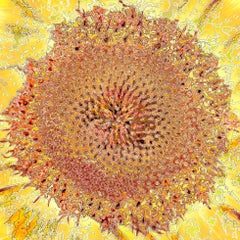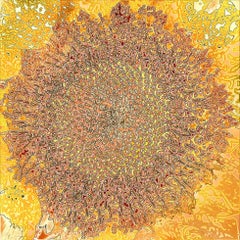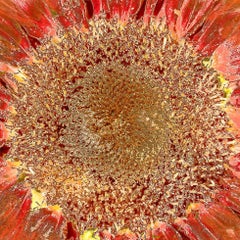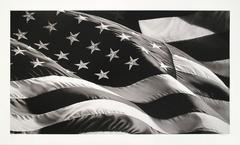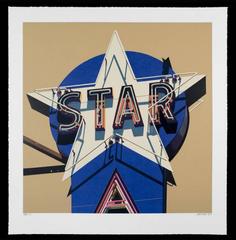21st Century and Contemporary Still-life Prints
to
384
463
293
439
262
230
Overall Width
to
Overall Height
to
880
191
131
105
41
29
17
16
13
5
3
2
1
93
44
36
35
29
214
278
2,337
1,687
17
19
36
30
91
243
319
470
551
222
185
776
486
417
287
281
226
138
126
123
105
105
90
89
65
63
61
58
58
48
42
40
40
39
699
301
294
271
224
206
384
939
571
Period: 21st Century and Contemporary
Helios
Located in New York, NY
C-print on Endura metallic paper (Edition of 5)
Signed and numbered, verso
This artwork is offered by ClampArt, located in New York City.
Begun in 2003, the series of works collect...
Category
Contemporary 21st Century and Contemporary Still-life Prints
Materials
C Print
Price Upon Request
Surya
Located in New York, NY
C-print on Endura metallic paper (Edition of 5)
Signed and numbered, verso
This artwork is offered by ClampArt, located in New York City.
Begun in 2003, the series of works collect...
Category
Contemporary 21st Century and Contemporary Still-life Prints
Materials
C Print
Price Upon Request
Inti
Located in New York, NY
C-print on Endura metallic paper (Edition of 5)
Signed and numbered, verso
This artwork is offered by ClampArt, located in New York City.
Begun in 2003, the series of works collect...
Category
Contemporary 21st Century and Contemporary Still-life Prints
Materials
C Print
Price Upon Request
Untitled (Flag)
By Robert Longo
Located in New York, NY
Untitled (Flag), 2013
Archival pigment print
26 1/4 × 43 in (66.7 × 109.2 cm)
Edition of 36
Category
Contemporary 21st Century and Contemporary Still-life Prints
Materials
Archival Pigment
Price Upon Request
Star, from American Signs Portfolio
Located in New York, NY
ROBERT COTTINGHAM
Star, from American Signs portfolio, 2009
screenprint in colors, on wove paper, with full margins,
40 1/8 x 39 1/8 in (101.9 x 99.4 cm)
signed, dated `2009' and numbered edition of 100 in pencil
--
Robert Cottingham
B. 1935, BROOKLYN, NEW YORK
Born in 1935 in Brooklyn, Robert Cottingham is known for his paintings and prints of urban American landscapes, particularly building facades, neon signs, movie marquees, and shop fronts. After serving in the U.S. Army from 1955 through 1958, he earned a BFA at Pratt Institute, Brooklyn, in 1963. Cottingham began his professional artistic career as an art director for the advertising firm Young and Rubicam in the early 1960s. Although he is typically associated with Photorealism, Cottingham never considered himself a Photorealist, but rather a realist painter working in a long tradition of American vernacular scenes. In this respect, his work often draws parallels to a number of American painters such as Stuart Davis, Charles Demuth, Edward Hopper, and Charles Sheeler.
Cottingham’s interest in the intersections of art and commerce derive from his career as an adman and the influence of Pop art. Many of his paintings convey an interest in typography and lettering, as well as an awareness of the psychological impact of certain isolated words and letters. In his facades, techniques from advertising, namely cropping and enlarging, often produce words of enigmatic or comical resonance such as “Art,” “Ha,” or “Oh.” Cottingham’s enlarged sense of scale is reminiscent of James Rosenquist’s work, while his interest in text suggests the influence of Robert Indiana and Jasper Johns. In general, Cottingham viewed his work as continuing the legacy of Pop artists such as Andy Warhol, who also had a background in advertising.
In 1964, Cottingham relocated to Los Angeles for work. There, inspired by the drastically different environment of the West Coast metropolis, he began to commit seriously to painting. Fascinated by Hollywood’s exaggerated glitz and the downtrodden atmosphere of the downtown, Cottingham saw in Los Angeles the relics of a bygone commercial heyday and desired to capture its kitschy and uncanny atmosphere, bathed in the near perpetual sunlight of Southern California.
In 1968, Cottingham ended his advertising career in order to devote all his time to painting. In the late 1960s, he started using photography in his practice, first as an initial reference point for his process. After selecting a photograph, he translates it into black-and-white drawings by projecting the image onto gridded paper...
Category
Photorealist 21st Century and Contemporary Still-life Prints
Materials
Screen
Price Upon Request
American Signs portfolio
Located in New York, NY
ROBERT COTTINGHAM
American Signs portfolio, 2009
The complete set of twelve screenprints in colors, on wove paper, with full margins, 40 1/8 x 39 1/8 in (101.9 x 99.4 cm)
all signed, dated `2009' and numbered edition of 100 in pencil, published by Exhibit A Fine Art and Editions and American Images Atelier, New York, all in excellent condition, contained in original gray silk-covered box with artist and title embossed with gold foil.
Robert Cottingham
B. 1935, BROOKLYN, NEW YORK
Born in 1935 in Brooklyn, Robert Cottingham is known for his paintings and prints of urban American landscapes, particularly building facades, neon signs, movie marquees, and shop fronts. After serving in the U.S. Army from 1955 through 1958, he earned a BFA at Pratt Institute, Brooklyn, in 1963. Cottingham began his professional artistic career as an art director for the advertising firm Young and Rubicam in the early 1960s. Although he is typically associated with Photorealism, Cottingham never considered himself a Photorealist, but rather a realist painter working in a long tradition of American vernacular scenes. In this respect, his work often draws parallels to a number of American painters such as Stuart Davis, Charles Demuth, Edward Hopper, and Charles Sheeler.
Cottingham’s interest in the intersections of art and commerce derive from his career as an adman and the influence of Pop art. Many of his paintings convey an interest in typography and lettering, as well as an awareness of the psychological impact of certain isolated words and letters. In his facades, techniques from advertising, namely cropping and enlarging, often produce words of enigmatic or comical resonance such as “Art,” “Ha,” or “Oh.” Cottingham’s enlarged sense of scale is reminiscent of James Rosenquist’s work, while his interest in text suggests the influence of Robert Indiana and Jasper Johns. In general, Cottingham viewed his work as continuing the legacy of Pop artists such as Andy Warhol, who also had a background in advertising.
In 1964, Cottingham relocated to Los Angeles for work. There, inspired by the drastically different environment of the West Coast metropolis, he began to commit seriously to painting. Fascinated by Hollywood’s exaggerated glitz and the downtrodden atmosphere of the downtown, Cottingham saw in Los Angeles the relics of a bygone commercial heyday and desired to capture its kitschy and uncanny atmosphere, bathed in the near perpetual sunlight of Southern California.
In 1968, Cottingham ended his advertising career in order to devote all his time to painting. In the late 1960s, he started using photography in his practice, first as an initial reference point for his process. After selecting a photograph, he translates it into black-and-white drawings by projecting the image onto gridded paper...
Category
American Realist 21st Century and Contemporary Still-life Prints
Materials
Screen
Price Upon Request
Blue Sonica Whisper
Located in New York, NY
Blue Sonica Whisper
Category
Contemporary 21st Century and Contemporary Still-life Prints
Materials
Archival Ink
Price Upon Request
